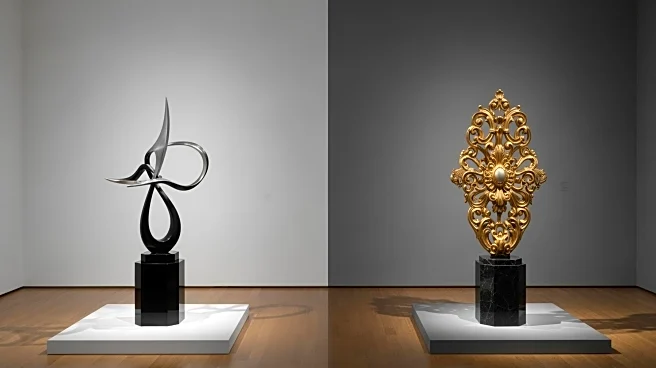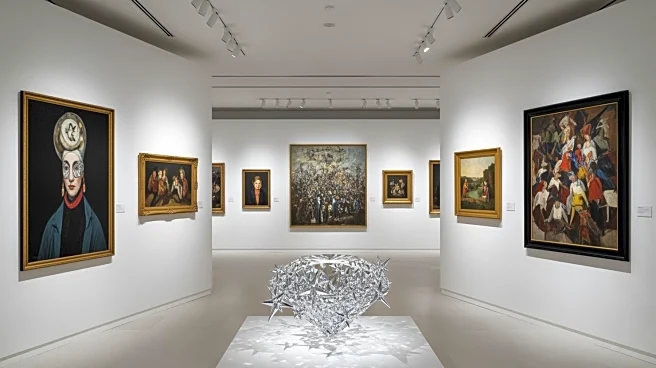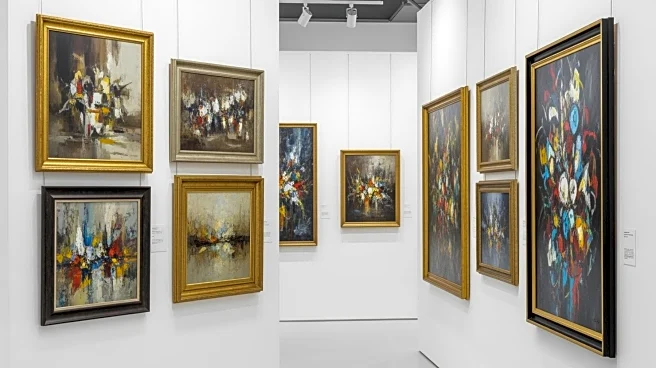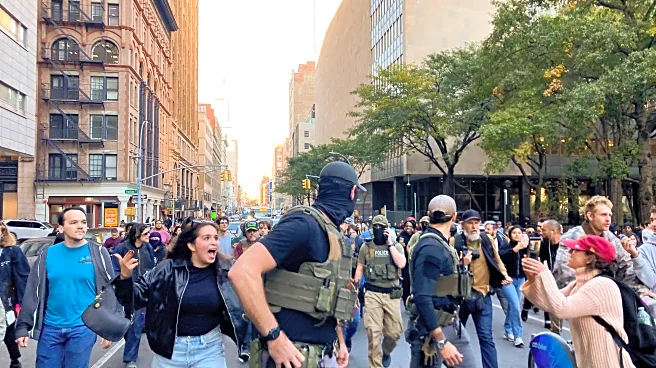What's Happening?
A block in Noho, New York City, has been co-named 'Jean-Michel Basquiat Way' to honor the late artist Jean-Michel Basquiat. The New York City Council, in collaboration with Basquiat's estate, unveiled the new street name at the corner of Great Jones Street
and Bowery. Basquiat, a prominent figure in the art world, lived and worked at 57 Great Jones Street from 1983 until his death in 1988. The building, which was once owned by Andy Warhol, served as Basquiat's studio and home during a significant period of his career. The renaming ceremony was attended by local residents, city officials, and members of Basquiat's family, who expressed gratitude for the recognition of his contributions to modern art.
Why It's Important?
The co-naming of a street after Jean-Michel Basquiat underscores his lasting impact on the art world and his role in redefining modern art. Basquiat's work challenged traditional boundaries of art, race, and class, making him a pivotal figure in the cultural landscape of the 1980s. This recognition by New York City not only honors his artistic legacy but also highlights the city's ongoing commitment to celebrating diverse cultural contributions. The event is particularly significant in the current social and political climate, as it acknowledges the importance of Black artists in shaping contemporary art and culture.
What's Next?
The co-naming of the street is expected to attract more attention to the Noho area, potentially increasing interest in the neighborhood's cultural and historical significance. The building at 57 Great Jones Street, which has been a site of artistic and historical importance, may see increased visits from art enthusiasts and tourists. Additionally, the recognition of Basquiat's legacy may inspire further initiatives to honor other influential artists and cultural figures in New York City.
Beyond the Headlines
The decision to honor Basquiat with a street co-naming reflects broader cultural shifts towards recognizing and valuing the contributions of artists from diverse backgrounds. It also raises awareness about the historical significance of urban spaces and their role in fostering creative communities. This move may encourage other cities to similarly acknowledge the cultural impact of artists and creatives who have shaped their local histories.














